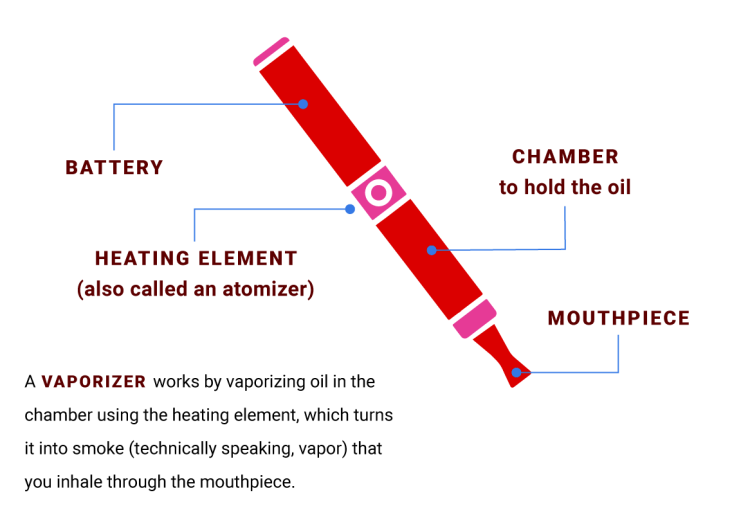VAPING 101 for Parents
Often vape pens and products look like common household objects such as pens, USB drives and sometimes even phone cases.
Brands: Eleaf, GreekVape and Kanger. Slang- cloud chasing, ride the mist, juuling, dabbing, mods, vape pens, vaporizing, vape pod and box mod.
The idea of e-cigarettes was brought up by Joseph Robinson in 1927. However, it was in 1963 when Herbert Gilbert and his “smokeless non-tobacco cigarette” made vaping popular. The Chinese pharmacist, Hon Lik, made the first modern e-cig in the mid-2000s due to his father dying from lung cancer.
Most e-cigarettes consist of four different components:

In many e-cigarettes, puffing activates the battery-powered heating device, which vaporizes the liquid in the cartridge. The person then inhales the resulting aerosol or vapor (called vaping).
Vaping, or vaporizing, is the process of heating up raw plant matter or extracts, without combustion. Instead of burning weed, tobacco or hash, vaping gently heats up these substances to limit the release of harmful chemicals and maximize the plant’s intended effects. Cannabis is typically vaporized at no less than 285°F but no greater than 450°F, and tobacco vapes at temps between 250°F and 300°F. Vapor has more in common with a cloud of steam than with a puff of smoke. And even though vaping reduces the effects of secondhand smoke, it doesn’t mean you’re not experiencing a drug’s effects.
The properties of vapor differ depending on what you actually vape. Different substances, like tobacco or hash, or its different forms of substances like oil or plant matter, change the vaping process. Sometimes it’s the substance in gaseous form, and sometimes vaping means inhaling liquid particles suspended in air as they cool after evaporation. Either way, the effect is the same. Drug molecules are inhaled and land on the lungs, which have an enormous surface area to catch them. The molecules then pass directly into the blood and bypass the digestive system. From there, the effects hit your brain in about five seconds, which is almost as quick as injecting the substance.
Vaping can cause nicotine addiction, which can lead to constant nervousness and stress. It can cause cancer, heart disease and diabetes. Smoking can also lead to a long list of illnesses and chronic diseases. Smoking is the main cause of Chronic Obstructive Pulmonary Disease (COPD), an incurable lung disease. It results in shortness of breath, coughing, swollen airways, scar tissue and death.
Nicotine is the primary agent in both regular cigarettes and e-cigarettes, and it is highly addictive. It causes you to crave a smoke and suffer withdrawal symptoms if you ignore the craving. Nicotine is also a toxic substance. It raises your blood pressure and spikes your adrenaline, which increases your heart rate and the likelihood of having a heart attack.
Nicotine affects your brain development. It can make it harder to learn and concentrate. Some of the brain changes are permanent and can affect your mood and ability to control your impulses as an adult.
Vaping puts nicotine into the body. Nicotine is highly addictive and can:
Ask them to decide why they want to quit. Have them write it down or put it on their phone. They can look at the reason(s) when they feel the urge to vape. They should pick a day to stop vaping, put it on the calendar and tell supportive friends and family that they are quitting on that day.
Download tools (such as apps and texting programs) onto the phone that can help with cravings and give encouragement while trying to stop vaping.
Nicotine addiction leads to very strong cravings for nicotine. It can also lead to:
The signs of withdrawal are strongest in the first few days after stopping. They get better over the following days and weeks.
Individuals should be prepared for feelings, people, and places that trigger the urge to vape. If possible, avoid these places and people. If the desire to vape occurs, try these things instead:
Addiction is a complex condition, a brain disease that is manifested by compulsive substance use despite harmful consequence. Source
Copyright © 2024 Muskogee CAN